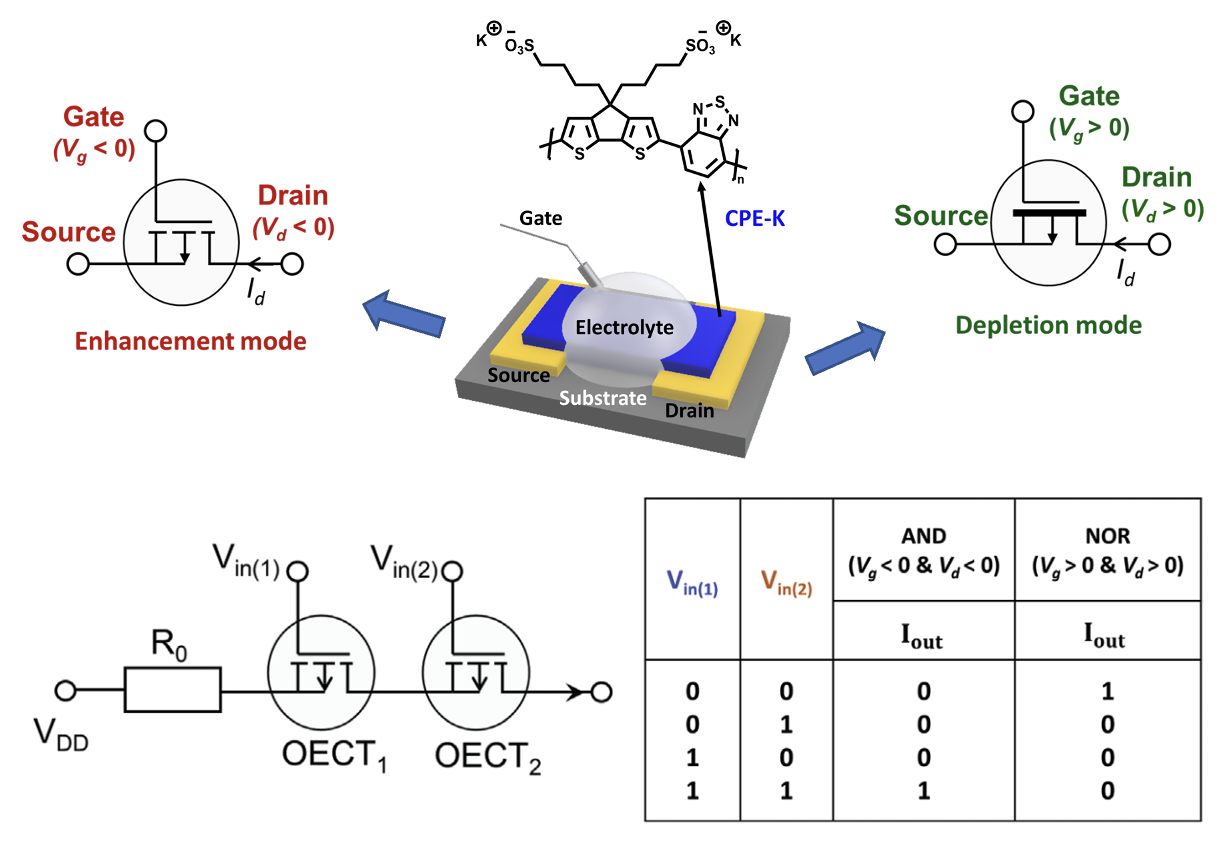Data Driven Discovery of Conjugated Polyelectrolytes for Neuromorphic Computing

Dual mode transistors, the type of transistors that work in both depletion mode and enhancement mode, were reported more than 50 years ago using inorganic semiconductors, such as Silicon, but have not been shown in organic electronics. We report the first dual mode organic transistors based on organic electrochemical transistors (OECTs) using CPE-K, a self-doped conjugated polyelectrolyte, as the active material. The work stems from a key finding that CPE-K can be both doped and dedoped upon the interaction with anions and cations in an electrolyte, such as sodium chloride [i.e., table salt] dissolved in water. This property enables dual-mode functionality in OECTs, whose mode switching is accomplished by simply altering the polarity of the applied gate and drain voltages. A physical model for the device was developed to explain its working mechanism and correctly predicts its behavior in both operation modes. We also demonstrated the utilization of dual-mode organic transistors in reconfigurable electronics by fabricating logic gates that could be switched between AND and NOR, and OR and NAND on the fly.
Impact: Being simple, power efficient, and compatible with high throughput microfabrication techniques, dual mode OECTs are a promising candidate for the next generations of efficient computing systems and adaptive electronics.
